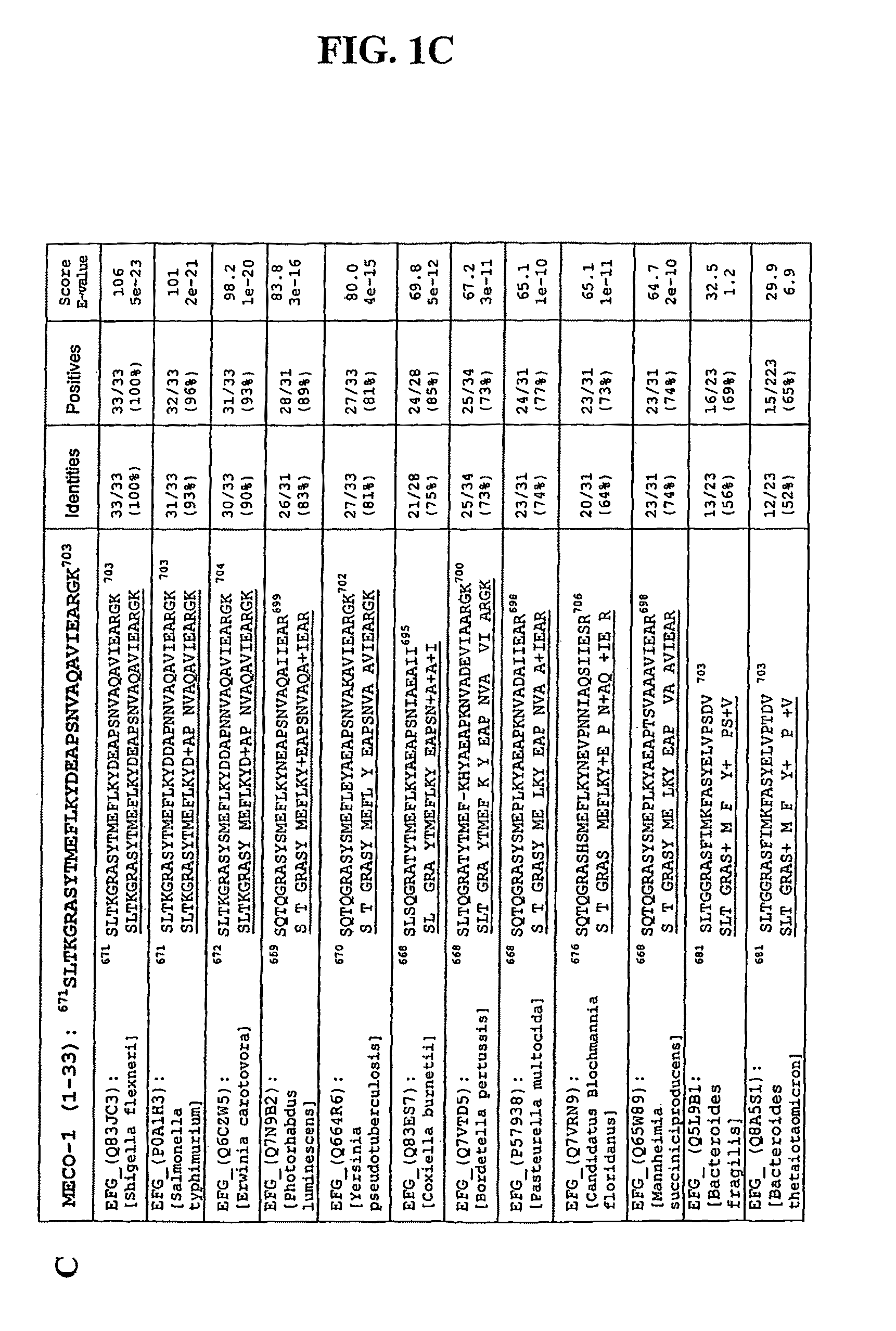Peptide mimics of melanocyte stimulating hormone
a technology of melanocytes and mimics, applied in the field of bioactive peptides, can solve the problem of killing the host that is being defended, and achieve the effect of reducing food intake in the mammal
- Summary
- Abstract
- Description
- Claims
- Application Information
AI Technical Summary
Benefits of technology
Problems solved by technology
Method used
Image
Examples
example 1
A Peptide Released from E. coli is More Potent than α-MSH in Rescuing Septic Mice from Death
example summary
[0186]MECO-1 is a novel E. coli peptide, isolated from conditioned medium, whose structure corresponds to the 33 amino acid C-terminus of elongation factor-G (EF-G). When a synthetic replicate of MECO-1 was administered parenterally, it mimicked the human melanocortin α-MSH in rescuing mice from death due to cecal ligation and puncture (CLP), an experimental model of perforated appendix with peritonitis and sepsis. In these mice with CLP, administration of MECO-1 and α-MSH also blunted the rise in serum levels of tumor necrosis factor (TNF)-α, interleukin (IL)-6, and HMGB-1 (high mobility group box protein 1), three of the “inflammatory cytokine cascade” cytokines that contribute to the morbidity and mortality associated with sepsis and other inflammatory diseases or conditions. In vitro, the release of HMGB-1 from murine macrophage-like RAW 264.7 cells in response to LPS (lipopolysaccharide / endotoxin) was markedly blunted by MECO-1, α-MSH, and ACTH at 100 pM. Likewise, the multifol...
example 2
Effect of MECO-1 on Colitis and Other Forms of Inflammatory Bowel Disease
Introduction
[0232]Bacteria and their products are highly stimulatory to the host's immune system, activating host cells and stimulating release of cytokines and other pro-inflammatory agents The present studies have shown that bacteria of the type that normally inhabit the gut also produce and release substances that are anti-inflammatory that are able to suppress the pro-inflammatory responses in the host.
Hypotheses
[0233]Our hypothesis is that (i) colitis and other inflammatory diseases of the bowel represent an imbalance between the pro-inflammatory and anti-inflammatory forces, and that (ii) the anti-inflammatory agents of bacterial origin [such as E. coli-derived MECO-1 described here] contribute significantly to the normal balance and that (iii) these anti-inflammatory agents can be used therapeutically in patients with inflammatory bowel diseases to restore that balance, i.e health.
[0234]Receptor for MECO...
PUM
| Property | Measurement | Unit |
|---|---|---|
| concentrations | aaaaa | aaaaa |
| concentration | aaaaa | aaaaa |
| mitochondrial elongation factor | aaaaa | aaaaa |
Abstract
Description
Claims
Application Information
 Login to View More
Login to View More - R&D
- Intellectual Property
- Life Sciences
- Materials
- Tech Scout
- Unparalleled Data Quality
- Higher Quality Content
- 60% Fewer Hallucinations
Browse by: Latest US Patents, China's latest patents, Technical Efficacy Thesaurus, Application Domain, Technology Topic, Popular Technical Reports.
© 2025 PatSnap. All rights reserved.Legal|Privacy policy|Modern Slavery Act Transparency Statement|Sitemap|About US| Contact US: help@patsnap.com



